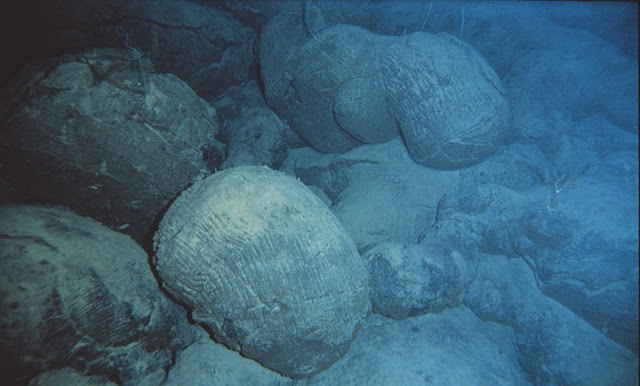March 20, 2018
Today’s episode focuses on one of those wonderful jargon words geologists love to use: Ophiolites.
It’s not a contrived term like cactolith nor some really
obscure mineral like pararammelsbergite. Ophiolites are actually really important
to our understanding of the concept of plate tectonics and how the earth works
dynamically.
The word goes back to 1813 in the Alps, where Alexandre
Brongniart coined the word for some scaly, greenish rocks. Ophiolite is a
combination of the Greek words for snake and stone, and Brongniart was also a
specialist in reptiles. So he named these rocks for their resemblance to snake
skins.
Fast forward about 150 years, to the 1960s. Geophysical data,
deep-sea sampling, and other work was leading to the understanding that the
earth’s crust is fundamentally different beneath the continents and beneath the
oceans—and we found that the rocks in the oceanic crust are remarkably similar
to the greenish, iron- and magnesium-rich rocks that had been labeled
ophiolites long ago and largely ignored except by specialists ever since.
Those rocks that form the oceanic crust include serpentine
minerals, which are soft, often fibrous iron-magnesium silicates whose name is yet
another reference to their snake-like appearance. Pillow basalts, iron-rich lava flows that
solidify under water with bulbous, pillow-like shapes, are also typical of
oceanic crust. The term ophiolite was rejuvenated to apply to a specific
sequence of rocks that forms at mid-ocean ridges, resulting in sea-floor spreading
and the movement of plates around the earth.
The sequence usually but not always includes some of the
most mantle-like minerals, such as olivine, another iron-magnesium silicate,
that may settle out in a magma chamber beneath a mid-ocean ridge. Shallower, relatively
narrow feeders called dikes toward the top of the magma chamber fed lava flows
on the surface – but still underwater, usually – that’s where those pillow lavas
solidified.
There are certainly variations, and interactions with water
as well as sediment on top of the oceanic crust can complicate things, but on
the whole that’s the package. So why not just call it oceanic crust and forget
the jargon word ophiolite? Well, we’ve kind of done that, or at least
restricted the word to a special case.
